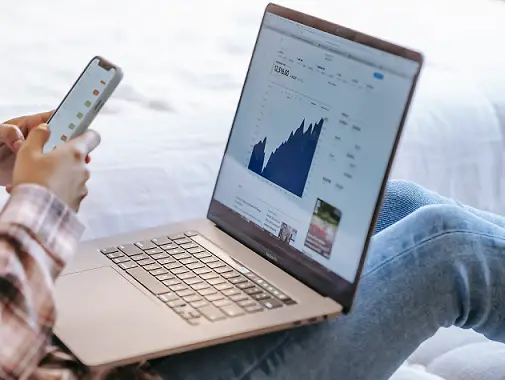US stocks continued their decline on Thursday, filling out the month of June with impressive losses, to further pad the losses of the second quarter and first half of 2022. As they did, concerns over inflation and the deepening prospects of a recession weighed heavily on risk assets.
The S&P 500 was down by 0.9% on Thursday, dropping to 3,785.38, meaning the S&P 500 has lost 20.6% just in the first half of the year – its worst first half since 1970. The Dow was down 15.3% year to date, to 30,775.43 – its worst first half since 1962. The Nasdaq is down 29.5% so far this year, which is the worst first half for it, ever.
The anti-risk sentiment in stocks extended to other assets, including oil. WTI crude futures dropped to just above $105, making its first monthly decline since November 2021. Bitcoin dropped below $19,000.
Stocks were also affected by new data showing inflation is still elevated, and real consumer spending is still down. Real personal spending dropped more than expected in May, 0.4%, after a rise of 0.7% in April. This suggests increased prices are weighing on demand. And while May Personal Consumption Expenditures, the Fed’s favorite inflation benchmark, slowed slightly more than expected, it was still at almost multi-decade highs. It rose by 4.7% over the year, compared to the 4.8% expectation. Headline inflation, including energy and food, was also higher than expected, at 6.3%, which was the same as April.
Stocks have been weighed down heavily for months as fears of inflation bounced off fears of a recession, and the Fed began to step in and cool the economy to slow price hikes. It has weighed most heavily on cyclical sectors more vulnerable to changes in economic activity. The energy sector, which was hot at the beginning of the year, ended up lagging the most out of the S&P 500, falling 17% just in June, while managing to still hold gains of more than 29% for the year to date. While all 11 major S&P 500 sectors ended down in June, defensive healthcare, consumer staples and utilities all outperformed due to their inherent resilience in downturns.
Fed Chair Jerome Powell reiterated his assertion this week that the Fed’s main goal is bringing down inflation, further worrying investors that they will be willing to tolerate economic slowdowns to make that happen.
At the European Central Bank’s yearly economic policy conference in Portugal, Powell said, “Is there a risk we would go too far? Certainly there’s a risk. The bigger mistake to make — let’s put it that way — would be to fail to restore price stability.”
It is expected the next Fed meeting will produce another 0.75% hike to the Fed funds rate. A number of key central bank officials have indicated with inflation and consumer inflation expectations so high, the Fed will need to act strongly if it is to begin to gain control of the rampant inflation that is beginning to attack demand.

